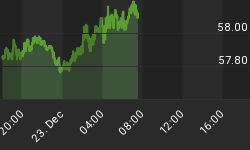This week will see a historic event: on March 26, trading will begin in yuan-denominated crude oil futures contracts on the Shanghai International Energy Exchange. The futures launch is historic because it will be the first time that foreign traders will have access to a Chinese commodity market. It is also historic because the yuan oil futures have been in the making for years, but have been delayed time and again.
Many investors are eagerly awaiting the chance to tap China’s booming commodity markets, but Beijing is going about the launch with extra caution after in 1993 its first attempt at oil futures flopped within a year because of uncontrollable price volatility.
China last year became the world’s top oil importer, and this year it will likely keep the crown. The time is as ripe as it will ever be for the launch of the futures, and China is now trying to make sure that volatility will not be excessive. This, however, could compromise the success of the futures.
The approach Beijing has chosen is through increasing the cost of oil storage to discourage pure-play speculators from flooding in the market and unleashing price volatility that could spell doom for the brand-new contracts. Bloomberg reports that these will be set at about US$0.95 per barrel per month. This compares with US$0.05-0.07 per barrel per month for storage capacity at Louisiana’s Offshore Oil Port. The international storage cost averages US$0.25-0.50 per barrel per month.
Such high storage costs will almost certainly discourage speculators such as prop traders and hedge funds from tapping the new yuan-denominated contract, all the more so in light of the fact that the nearest-term contract to be launch on March 26 is for delivery in September. Related: China’s Soft Power Grab May Be Bad News For Emerging Economies
Yet these high costs, which could exceed US$1 per barrel per month when you add financing costs, could discourage even legitimate investors. “High storage costs could prevent the necessary arbitrage between cash and futures markets, which further significantly reduces the price discovery function of the contract. “Without a good price discovery function, no futures contracts can eventually be successful,” J.P. Morgan research director Jian Yang told Bloomberg.
It is obviously a question of priorities. China wants these futures because of the vibrant oil trade going on in the world’s largest importer of the commodity. What it doesn’t want is excessive volatility, which has become the mark of Chinese commodity markets in recent years as trading becomes a national sport for the Chinese.
Already a trading band of 5 percent on either side has been set for the oil futures, with 10 percent on either side for the first trading day. Margin has been set at 7 percent. There is no doubt that regulators are ready to step in without delay should the new market start to exhibit any signs of a bubble. All seems set for the launch.
It looks like the authorities have done what they can to cap the volatility potential, but only time will tell if the bigger goal could be achieved: displacing the dollar as the one and only petrocurrency in the world, part of Beijing’s strategy of advancing the country’s global influence by making the yuan an international currency.
By Irina Slav for Oilprice.com
More Top Reads From Safehaven.com:
















